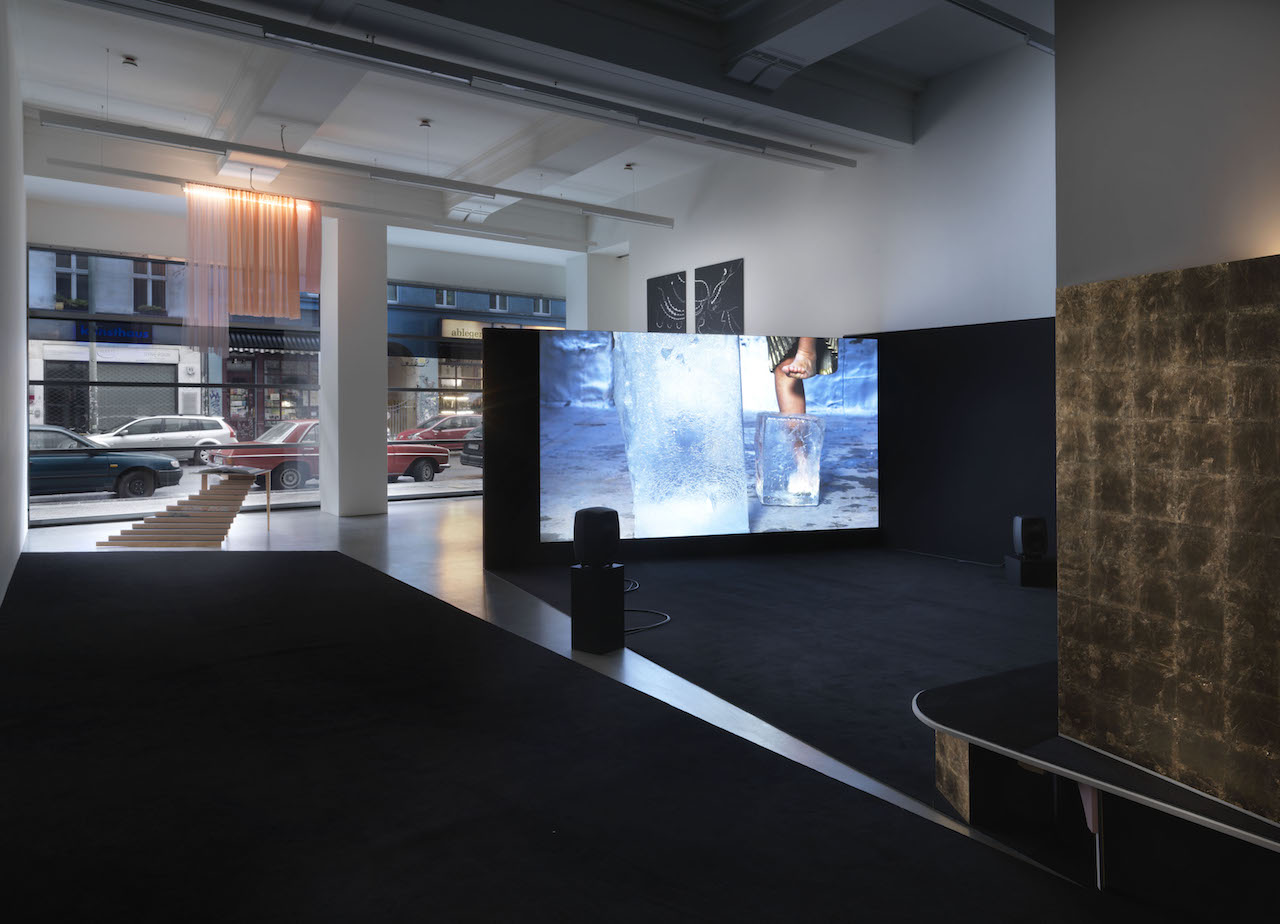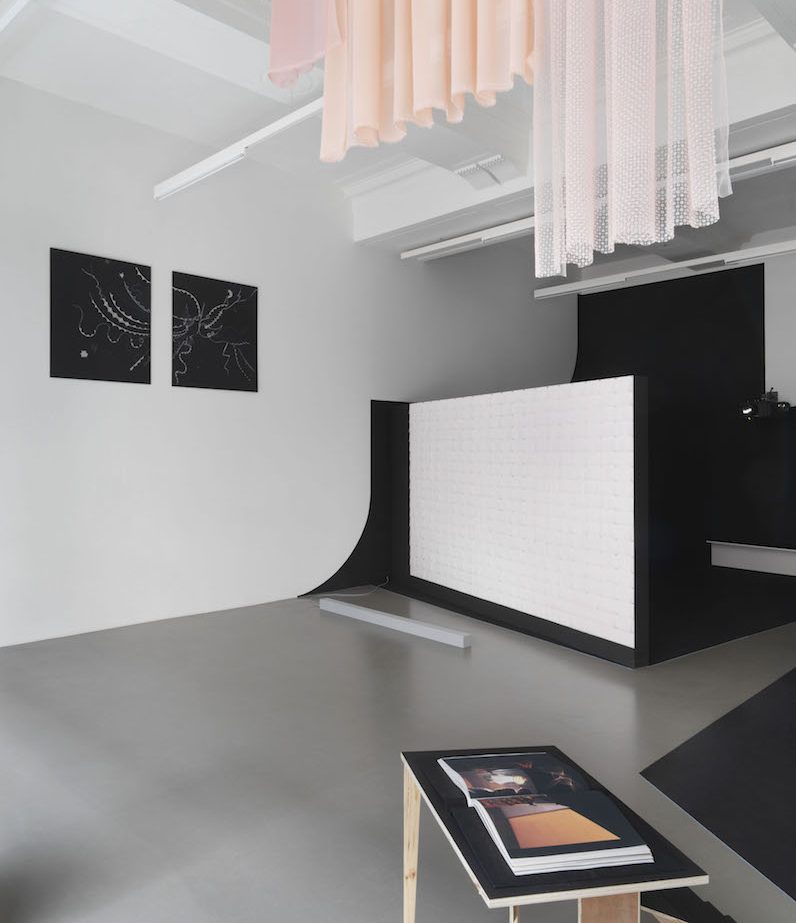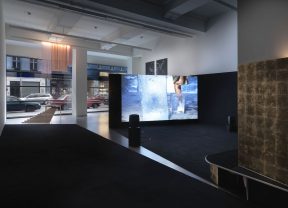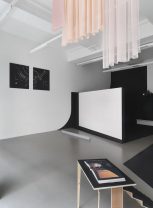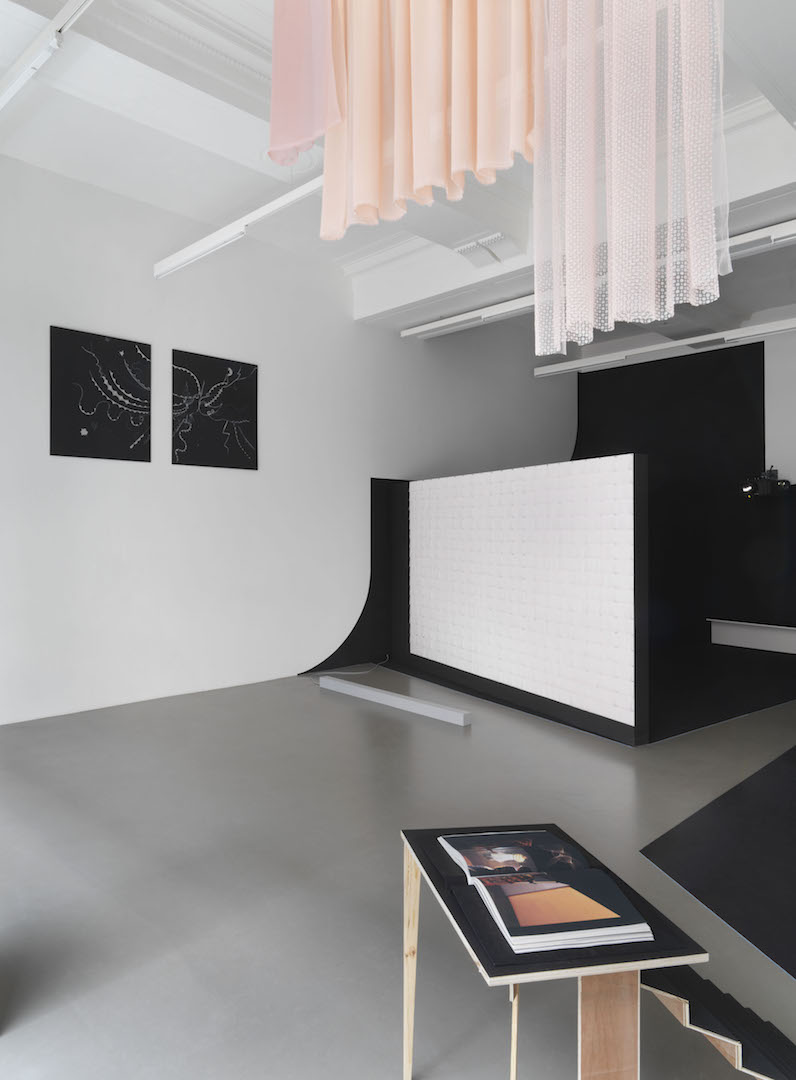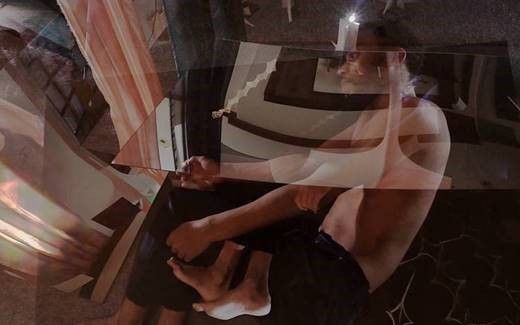And who has not dreamed of violence?
- daadgalerie
- Exhibition
With works by Sung Hwan Kim
Sung Hwan Kim’s video Love Before Bond, created together with musician David Michael DiGregorio aka dogr and presented in the central pavilion of the Giardini, can be described as one of the highlights of the recently concluded 57th Venice Biennale. In his first solo exhibition in Berlin, Kim will present this work along with other works as part of an extensive installation specially developed for the daadgalerie.
Anxieties and depression, the malaise and anger felt by today’s teenagers as well as racism, everyday forms of prejudice, lack of media representation and social inclusion, are the themes of Love Before Bond that resonate in scenic sequences featuring young protagonists.
The oppressive atmosphere of the various stage-like interiors is accompanied by a poetic narration that takes up passages from essays by African American writer and civil rights activist James Baldwin. Kim often chooses a literary work as a point of departure for developing a work that allows him to engage with a particular artistic language, with time periods, and socio-political issues. Kim’s own artistic approach is poetic, associative, and rhythmically musical, full of allusive gestures and recurring themes that only hint at varying modes of reading.
In Love Before Bond, quotes from Baldwin and other writers, such as William Shakespeare or Joseph Conrad, quoted by Baldwin in his novel Another Country (1962), as well as text passages spoken in Arabic, give linguistic form to the young protagonists’ teenage anxiety, and—against the backdrop of Baldwin’s descriptions of the emotional impacts of racism and the experience of living as a homosexual in American society of the 1950s and 60s—an historical horizon.
But the teen performers are also actual representatives of a younger generation (all were born in 2000) who worked on the scenes with the artist during a workshop. Among them was Samori Coates, the son of Ta-Nehisi Coates, author of Between the World and Me (2015), an analysis of racial conflict in America in the form of a letter from the author to his fifteen-year-old son. Another performer is the artist’s own niece. Her genuine frustration, when as a teenager maturing into a Korean American woman she struggled to develop a sense of identity within a history of marginalization, was an important inspiration for the film. In Love Before Bond, her character is related to themes from the history of suppression of the African-American community.
Love before Bond comes across like a science fiction-esque love story about people who have yet to meet. Again in reference to Baldwin, Kim works with the “potential of narratives to uncover or obscure the connections between the individual and the historical context.”
The short scenes of the film pick up on various themes present in Baldwin, which are still applicable to the daily experiences of African-American youth, such as, for example, the proverbial “deprived of shoe-laces and belt” in prison—which Baldwin described as one of the most demoralizing experiences of his life—or the caution and attitude that African-Americans should demonstrate when out in public in order not to run the risk of being arrested or potentially shot.
These themes are implicitly contrasted with the history and current situation of Korean immigrants in the US. In conversation, Kim goes from mentioning a series of initial immigration laws and bans that specifically target Asian immigrants, to the L.A. riots of 1992, to the current status of Asian population groups. The L.A. riots stemming from the Rodney King trial are seen here as a (negative) defining moment for African-American and Korean communities in the US, where the fate of both minorities symptomatically overlapped.
Beyond these connections, Love Before Bond operates in its own universe, created from gestures and a collage-like image design, a play with perspective, light, the layering of different materials and surfaces, movement and sound, which is continued beyond the projected image in the design of the exhibition space. Like an expanded space of the film, it reflects on the forms and gestures of Kim’s film and other works. A recurrent motif is a specific type of column from the Pleasure Pavilion (1962) located in the garden of Philip Johnson’s Glass House. Kim, who studied architecture, uses this form that appears in the context of Love Before Bond to in a way stage a formal encounter between Baldwin and Johnson, New York contemporaries who in his view represent artistic and political antipodes, which would never have actually taken place in reality.
The title of the exhibition, And who has not dreamed of violence, is a quote from James Baldwin’s 1961 essay “Alas, Poor Richard.” Part of the exhibition title is also the quote translated into Sudanese Arabic, a dialect of Arabic one of the teenagers speaks in Love Before Bond. His theater project 피나는 노력으로 한 (A Woman Whose Head Came Out Before Her Name), created in 2015 during his one-year stay in Berlin, attests to Sung Hwan Kim’s interest in translation processes and linguistic experimentation. Premiered the same year in Gwangju, South Korea, the theater piece—which combines performance, live music, lighting, and live video transmission set within a complex stage design featuring various architectural elements such as stairs or doors—is a thematic and conceptual precursor to Love Before Bond. Part of the exhibition at the daadgalerie is a sketchbook—presented on a reduced-sized version of an element from the stage design—that provides insight into the working process of the piece. The work takes as its point of departure the poetry collection Prosa del otoño en Gerona by Roberto Bolaño, but not Bolaño’s original poems in Spanish, rather Kim’s translations or condensing of the works into English. The process of working on the translations also spawned a series of drawings that were, in turn, converted into gestures and movements. A bird struck by lightning, one of themes that reappear in the exhibition in drawings and collages on paper and in a wall drawing, is loosely inspired by a Bolaño novella.
Arranged at different angles on the stage of 피나는 노력으로 한 (A Woman…) is a set of door frames, which multiple performers constantly passed through from different directions. This image is emblematic of Kim’s work, whose complex logic develops in a process-oriented fashion. Appropriately, the Korean title of the work referred to in English as “A Woman Whose Head Came Out Before Her Name” is translated as “trying until you bleed.”
Sung Hwan Kim (b. 1975 in Seoul) lives and works in New York. Recent Solo-Exhibitions include: CCA Gallery Kitakyushu, Japan, (2016); Life of Always a Mirror, Art Sonje Center, Seoul, Korea (2014); East Tank, The Tanks at Tate Modern, London (2012); Recent group shows and performances include: “Viva Arte Viva”, Central Pavilion, 57th Venice Biennale; Woman Whose Head Came Out Before Her Name, Asian Culture Center, Gwangju, South Korea (2015); Musée de la danse, in collaboration with Boriz Charmatz, Tate Modern, London (2015). Sung Hwan Kim was a guest of the DAAD Artists-in-Berlin Program in 2015.


